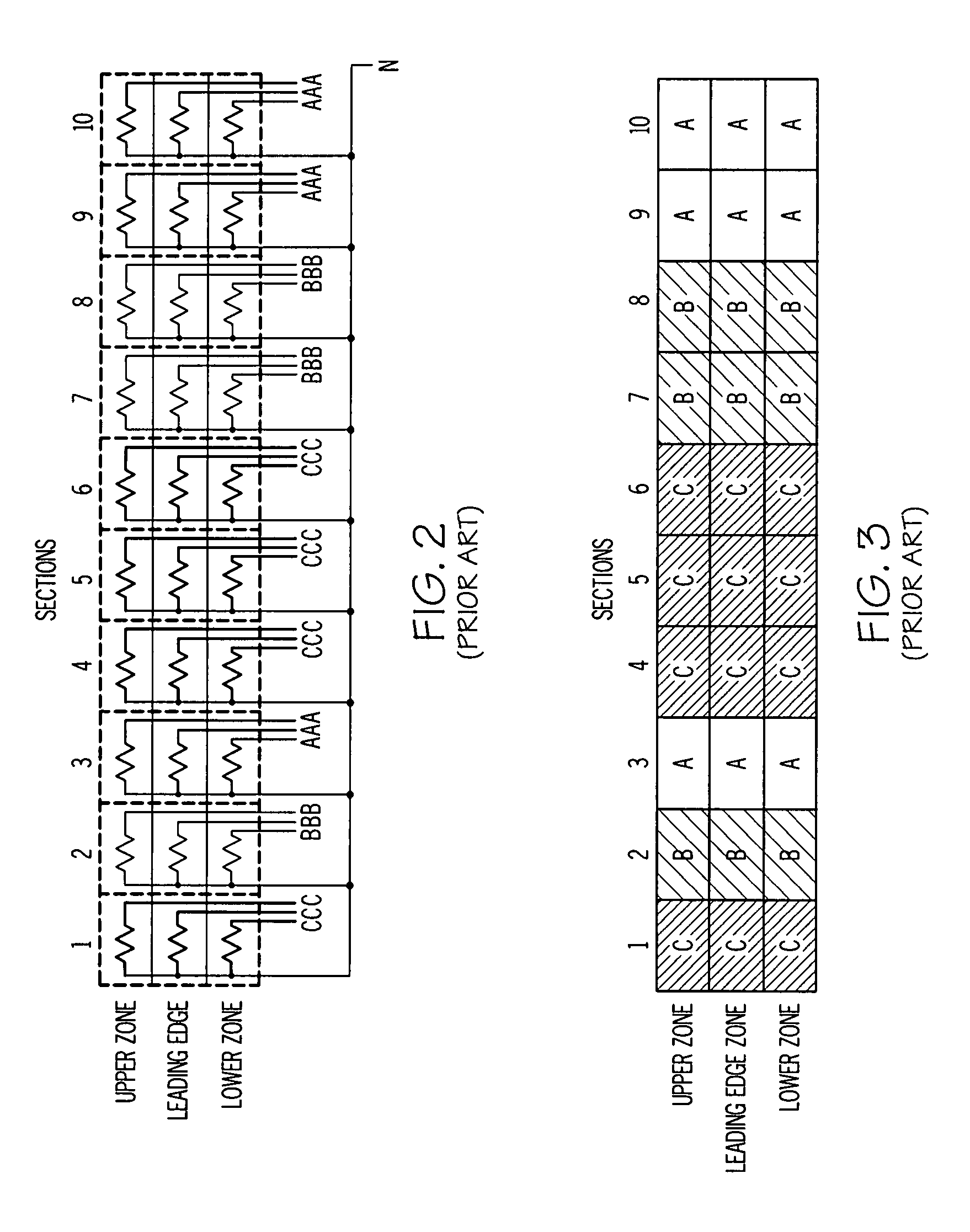Wing ice protection heater element network
a technology of heater elements and heater elements, applied in aircraft components, transportation and packaging, de-icing equipment, etc., can solve problems such as ineffectiveness, ice may continue to build up, and ice icing on the wing
- Summary
- Abstract
- Description
- Claims
- Application Information
AI Technical Summary
Problems solved by technology
Method used
Image
Examples
Embodiment Construction
zones of the same type, according to the prior art;
[0023]FIG. 5 is a logical map of the heating areas of an airfoil powered according to the second schematic diagram, in which one phase of three phase power supplies all power to all zones of the same type, according to the prior art;
[0024]FIG. 6 is a schematic diagram of the WIP heating network powering arrangement, according to an embodiment of the present invention;
[0025]FIG. 7 is a logical map of the heating areas of an airfoil configured according to an embodiment of the invention; and
[0026]FIG. 8 is a flowchart depicting a method of arranging sections and zones along a surface of an airfoil that ensures that electrical load is balanced across all power phases, according to an embodiment of the invention.
DETAILED DESCRIPTION OF THE INVENTION
[0027]The following detailed description is of the best currently contemplated modes of carrying out the invention. The description is not to be taken in a limiting sense, but is made merely ...
PUM
 Login to View More
Login to View More Abstract
Description
Claims
Application Information
 Login to View More
Login to View More - R&D
- Intellectual Property
- Life Sciences
- Materials
- Tech Scout
- Unparalleled Data Quality
- Higher Quality Content
- 60% Fewer Hallucinations
Browse by: Latest US Patents, China's latest patents, Technical Efficacy Thesaurus, Application Domain, Technology Topic, Popular Technical Reports.
© 2025 PatSnap. All rights reserved.Legal|Privacy policy|Modern Slavery Act Transparency Statement|Sitemap|About US| Contact US: help@patsnap.com



